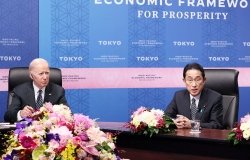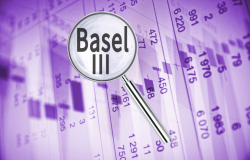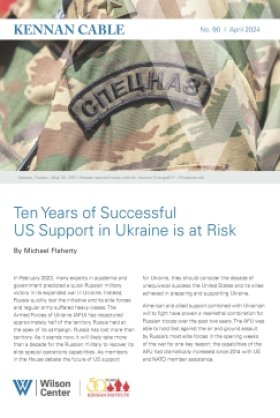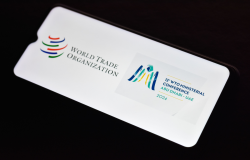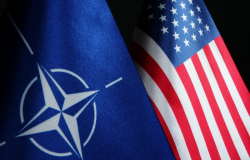West Still Lacks Adequate Response to BRI
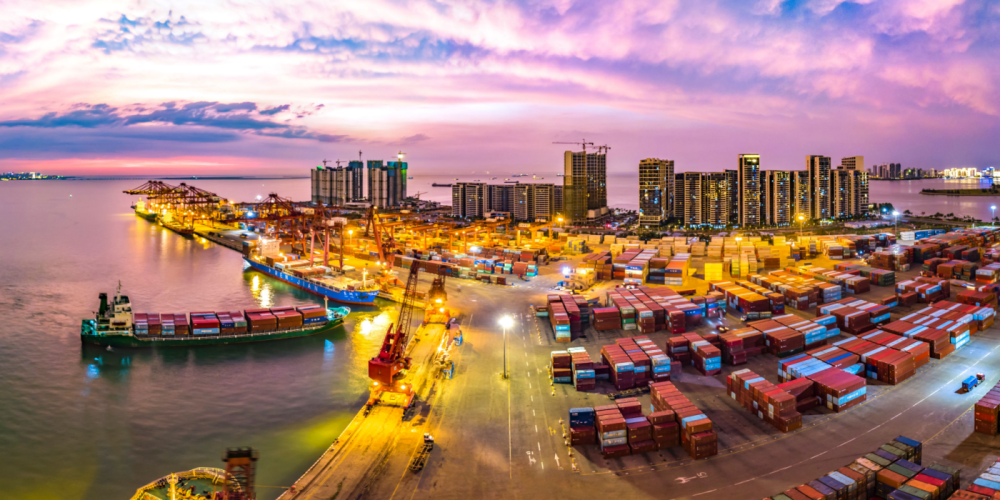
Shutterstock.com/DreamArchitect
China’s “reboot” of its flagship Belt & Road Initiative (BRI) last year reignited interest in the BRI itself and infrastructure diplomacy more broadly. Other major powers have been looking to emulate the program’s strategic success for some time, with mixed results.
What the US and China’s other strategic competitors have so far failed to understand is that while the BRI is a flawed model with often-questionable outcomes, it is usually the “least worst” (and sometimes only) route to financing major infrastructure projects for participating countries.
The US, its allies and other nations, have been late to this particular party, and “Washington has struggled to offer participating governments a more appealing economic vision.” Europe, the US, Japan, and India all have toyed with various ideas, both unilaterally and multilaterally.
The responses of the US and other major powers have been multifaceted, but still seem to lack a unifying theme. The Biden administration is a supporter of Japan’s ‘Quality Infrastructure Investment’ (QII) principles, developed when Japan held the G20 presidency in 2017. But the concept failed to gain much traction and the G20 made the principles “voluntary and non-binding,” freeing members from adhering to them.
The QII principles were a precursor to the Blue Dot Network (BDN), a Trump administration initiative that has been continued but modified under the Biden administration. The BDN includes the US, Australia, Japan, Spain, and the UK. Its goal is to certify infrastructure projects as being of “high quality.” The BDN has potential, but its members have yet to convincingly explain how the network would be a better alternative to BRI financing or drive greater investment or better project outcomes for developing and middle-income countries.
Both the G7 and the Quad groups have also announced programs, the Partnership for Global Infrastructure and Investment (PGII) and the Quad Infrastructure Fellowship, respectively. And in December 2021, the European Union launched its Global Gateway Program.
All of these programs, while they will provide some additional avenues for infrastructure development, lack ambition. And while many of the initiatives are multilateral, the proliferation of different initiatives has fractured available resources. Further, many are light on detail and aren’t moving the needle in terms of supporting new and better infrastructure projects.
Why Infrastructure Diplomacy?
My Wilson Center colleague Rory Linehan recently outlined the importance of infrastructure to what he called “economic diplomacy.” Infrastructure is one of the biggest enablers of economic growth and can drive greater economic and social inclusion. It may be one of the most meaningful ways that donor countries can provide support to developing countries.
At the multilateral level, an estimated 26%[1] of the International Development Agency and the International Bank for Reconstruction and Development’s commitments in Fiscal Year 2023 were for infrastructure. According to the World Bank, “Infrastructure affects growth through several supply and demand-side channels. Investments in energy, telecommunications, and transport networks directly impact growth, as all types of infrastructure represent an essential input in any production of goods and services. In addition, infrastructure can also reduce the cost of delivered goods, facilitate the physical mobility of people and products, remove productivity constraints, and increase competitiveness.”
The primacy of infrastructure as a development tool is undisputed. But what is the ultimate impact of infrastructure diplomacy on helping donor countries support their grand strategy?
Infrastructure Diplomacy Drives Real Strategic Outcomes
It would be naïve to think that aid funding does not contain an element of quid pro quo. At the same time, it would be overly cynical to think that aid funding is purely transactional. Aid funding, including infrastructure diplomacy, is a complex amalgam of motives and relationships. It is driven by genuine good will and by statecraft.
This makes it difficult to assess the impact of infrastructure diplomacy. Leaders will naturally focus on the goodwill aspects of their programs. At the 2017 BRI Summit, Chinese President Xi Xinping said that the program should be a “road for peace.” The White House was only slightly more circumspect when it announced the PGII, saying it would “will deliver game-changing projects to close the infrastructure gap in developing countries, strengthen the global economy and supply chains, and advance U.S. national security.”
But infrastructure diplomacy also drives real world outcomes for donors. China’s BRI has become a byword for effective soft (and sometimes hard) power projection. The BRI has helped China to accumulate a huge amount of soft power that has played out in international forums such as the United Nations and in the international decision making of many smaller countries around the world (for a recent example, see China’s push into the Solomon Islands). The success has been driven by speed of delivery, political hustle, massive state support, and low-cost builds.
What Are the Options for Strategic Competitors to the Belt & Road Initiative?
That said, China is not even the biggest investor in its own neighborhood. Japan is a much larger investor in infrastructure projects in Southeast Asia. And while the BRI has delivered soft power outcomes for China, the results have occasionally been mixed.
One of the key lessons for those who seek to replicate the BRI’s diplomatic success is to focus on the infrastructure rather than the diplomacy. This might seem counterintuitive. But where the BRI and Multilateral Development Banks infrastructure programs are led by infrastructure professionals, the US and others have so far tried to deliver large-scale infrastructure programs with teams whose primary skill set is more from the diplomatic world.
The approach has not worked and needs to change. An infrastructure program whose primary focus is not on infrastructure will inevitably fail. A solution may be the development and expansion of more national Infrastructure Banks with a commercial focus and greater commercial and project delivery acumen.
It needs to change because the competition is fierce. As recently as 2023, seven of eight independent scholars from Southeast Asian countries said the BRI has been a net positive for their country. This assessment is replicated elsewhere around the world–while the BRI comes with attendant economic, fiscal, social, and environmental costs for participants–it gets things built, and fast.
The BRI has been successful in accumulating strategic power for China, but it is an imperfect program. The BRI has well-documented issues with debt sustainability, opaque governance, project quality, environmental degradation, and lack of skills transfer. These imperfections–some of which appear to be features rather than bug –make the BRI vulnerable if someone can build a better option.
But building a better option requires more clarity. The market for development finance for infrastructure is a market like any other–the provider that best understands and delivers what customers want will prevail. At the moment, the BRI is doing this better than the alternatives. The US and others have tools to respond. Now they need to use them.
[1] Author’s estimate from World Bank 2023 Annual Report, https://www.worldbank.org/en/about/annual-report#anchor-annual
About the Author


Wahba Institute for Strategic Competition
The Wahba Institute for Strategic Competition works to shape conversations and inspire meaningful action to strengthen technology, trade, infrastructure, and energy as part of American economic and global leadership that benefits the nation and the world. Read more

